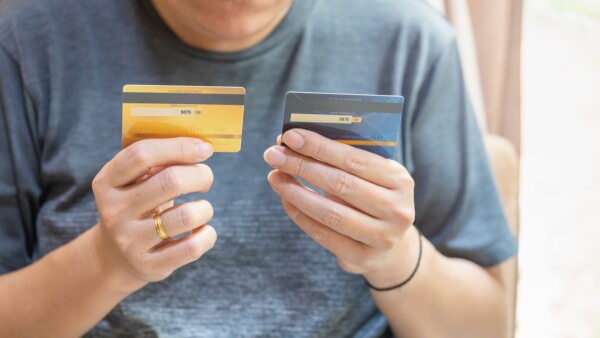What is the best place to exchange euros to pounds?
Looking for the best euro to pounds rate? We break down the best ways to exchange your money for your next trip to the UK.

Considering buying a car in the UK and bringing it back to Ireland? Or maybe you’re moving from the UK to Ireland to work, study or retire and want to take your beloved wheels with you? This guide is for you.
Importing a vehicle from the UK to Ireland is absolutely possible. But there are a few important steps you’ll need to take to make sure the process fully complies with the law on both sides of the Irish sea. It’s also worth remembering the rules have changed since Brexit.
We’ll walk through how to assess the costs of moving your car to Ireland, the paperwork and checks you’ll need to complete - and making your vehicle road-legal for Ireland. And to help you save money on currency conversion when importing your car into Ireland we’ll also introduce Wise. Get low cost international payments and simple, smart currency exchange which uses the mid-market exchange rate.
If you’re hoping to buy a car in the UK and import it to Ireland, you’ll first need to find the right car for you. Starting your research online is easy - and a smart way to get a feel for the options out there, and the approximate cost. Try one of these sites for everything from classic and vintage cars, to a family hatchback or a high powered performance car:
We’ve only listed the websites that rank as “great” on Trustpilot. Autotrader is the biggest car site in the UK, but you’ll also find great local dealers and niche options if you’re looking for a specific car type. Of course, prices can vary widely, so shopping around makes sense. It’s also worth noting that there are still scams and fraudsters who profit from selling used cars which aren’t safe, legal or worth the money. Do your due diligence checks to make sure the car is safe, get it double checked if you feel it’s needed, and don’t rush into any deals - especially if they seem too good to be true.
The exact costs of importing your car into Ireland will depend on how you’re moving the vehicle, as well as the specifics of the car and your personal situation. Here are the things you’ll need to consider:¹
Customs duty is a little complex because it depends on where the vehicle originated. Usually cars which were manufactured in Great Britain aren’t subject to duty. However, if the car was made elsewhere and then later shipped to the UK, you could find you need to pay duty of up to 10%.
VRT is set according to the type and size of car you have². It can be costly for larger, less efficient and more powerful vehicles. It’s good to know that there are some exemptions to VRT which may mean this cost is waived if you’re eligible.³ You can check this in the VRT Manual Section 02.
VAT is paid on all new cars, and on used cars coming from Great Britain. If you’re moving a used car from Northern Ireland to Ireland you may not need to pay. However, you’ll need to be able to prove that any fees owed when the car originally arrived in Northern Ireland were paid at the time.
You may find that the process for importing a car into Ireland is cheaper if you buy your vehicle in Northern Ireland. This will reduce the costs of transport, and may mean you pay less overall.
Here are some of the most popular websites for buying a car in Northern Ireland:
Another benefit of buying a car in Northern Ireland, is that, if the vehicle was registered in Northern Ireland or to a person resident in Northern Ireland before 1 January 2021, you can register that vehicle without any checks on the customs status.⁴
No matter which option you choose, you could save on cross border payments when you use Wise. Get currency conversion which uses the mid-market exchange rate with no markups, and no hidden fees. And international transfers which are simple, safe and fast. That means you spend less on fees, and can save both time and money when importing your car to Ireland.
Once you have found the car you want, you’ll need to make sure you can buy it safely and legally. Here’s how:⁵
It’s worth knowing that you’ll need the V5C certificate to import the car to Ireland. If you’re buying a used car, ask the seller to give you the V5C instead of sending it back to the DVLA - this is not necessarily the process they’ll be used to, so you’ll need to explain that you intend to export the car.
The exact process here will depend on whether you’re buying a car specifically for export, or taking a car you already own to Ireland.
If you’re exporting a car you already own, here’s what you need to do:⁸
If you’re buying a car specifically for export, the process may be a little different.⁹
From Great Britain, you’ll need to complete and send form VAT410 to the DVLA. You’ll then be given a date by which the vehicle must be exported to avoid paying VAT. Usually this means you can drive in the UK for 6 months if you need to, before exporting the car. You’ll be asked to prove the export has taken place later.
If you’re buying a car in Northern Ireland the form you need is VAT411, and you’ll probably only have 2 months before the car must be exported.
From January 2021, any imports from Great Britain to Ireland have had new post-Brexit processes in place. That means you’ll now have to provide various pieces of paperwork when importing your car - some of which are done by the carrier or haulier, and some of which can be done by yourself. These include:¹⁰
It’s important to have all the right documents ready before you attempt to import your car - your vehicle won’t be allowed on the ferry without the right paperwork. If you’re not using a customs broker or agent, read the details carefully online to get it right first time.
The processes for importing a vehicle from Northern Ireland are different. You shouldn’t have to make a customs declaration - however, you will be asked to prove where the car originated. If it was previously imported from Great Britain to Northern Ireland you’ll need documents to show the customs processes - and any payments required - were all completed at the time.
Once you and your car are in Ireland you have 30 days to register the vehicle and pay VRT.¹¹ Book an appointment online or by phone, at a national car testing (NCT) centre. If it’s a new vehicle you’ll need a registered certificate of conformity. You’ll also have to take along:
At this stage you’ll also be asked to pay your VRT. The amount you have to pay will depend on the type of car you have and the VRT band it falls into. You’ll be advised of the costs at the NCT centre when you visit.
A registration number will be assigned to your car when you register and pay the VRT. You then have 3 days to display the registration number. You’ll be able to buy your registration plates at the NCT when you’re registering the vehicle.
The final step to make your car road legal in Ireland is to pay motor tax and buy appropriate insurance. Insurance is mandatory if you want to drive in Ireland. If the car is over 4 years old you’ll also need a National Car Test (NCT) certificate - the equivalent of an MOT in the UK.
Motor tax is based on the specific vehicle - looking at emissions and weight for example. You can buy tax for 3, 6, or 12 months. In 2021, an annual payment runs from €120 to €2350 for the very biggest, most powerful vehicles. Vintage vehicles over 30 years old are usually exempt from this tax.¹²
Car insurance is a competitive industry, so there are lots of providers to choose from in Ireland. Cover and fees vary widely so make sure you shop around and buy the right level or insurance cover for your specific needs.
Importing a car into Ireland can involve a fair amount of paperwork - but all the steps you need to take are laid out and explained online by the UK and Irish governments and their agencies. You can also get professional support for a fee if you need help from a customs broker or specialist in transporting cars.
And remember that you can cut the costs of importing your car from the UK to Ireland with Wise. You’ll be able to cover the fees you need to pay using simple, smart currency conversion services with no hidden fees. You’ll always get the mid-market exchange rate which can mean you make significant savings against your regular bank or other competitors.
Sources used:
All sources last checked on 18 March 2021
*Please see terms of use and product availability for your region or visit Wise fees and pricing for the most up to date pricing and fee information.
This publication is provided for general information purposes and does not constitute legal, tax or other professional advice from Wise Payments Limited or its subsidiaries and its affiliates, and it is not intended as a substitute for obtaining advice from a financial advisor or any other professional.
We make no representations, warranties or guarantees, whether expressed or implied, that the content in the publication is accurate, complete or up to date.

Looking for the best euro to pounds rate? We break down the best ways to exchange your money for your next trip to the UK.

Heading to Canada? Find the easiest way to exchange your Euros for Canadian dollars. Say goodbye to complicated rates and hello to clarity.

Your guide to grabbing US Dollars in Dublin. Where to exchange, what to avoid, and how to get the most for your Euro.

EUR to AUD exchange made simple. Learn the best way to move your money, how the fees really stack up, and what exchange rates to look for.

Buying property in Scotland as an Irish citizen? You can. The Common Travel Area means you have the same rights as a UK buyer. Check it out.

Choosing between cards in Ireland? Compare the Wise card and Revolut card features to find the best fit for your spendings and transfers.